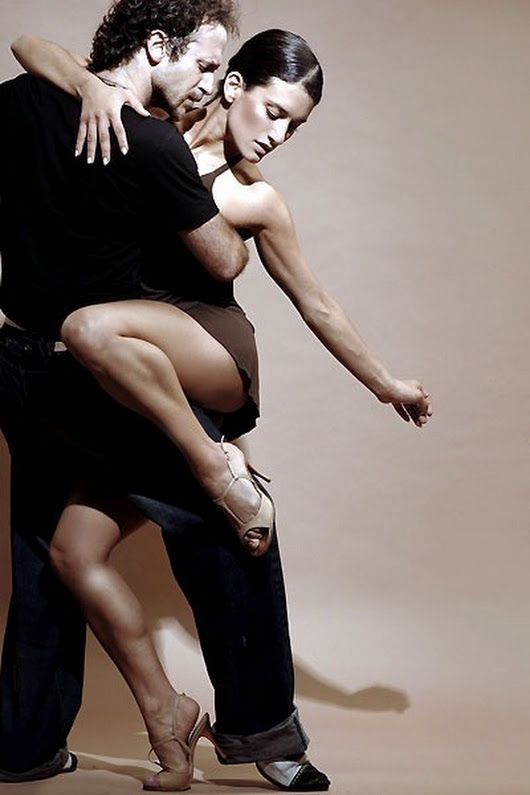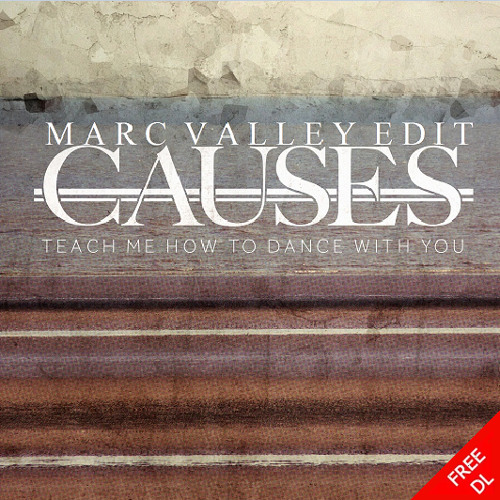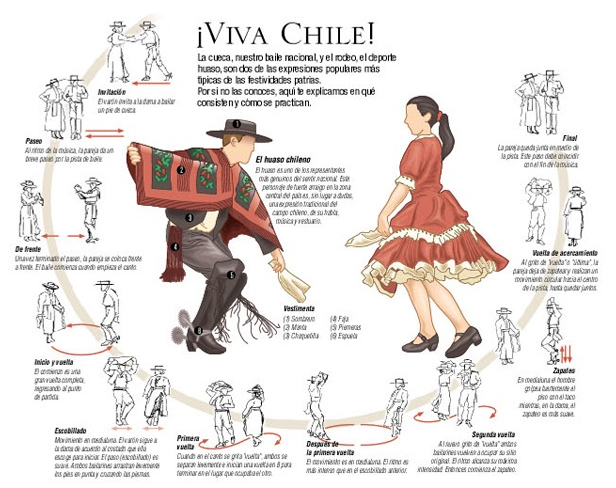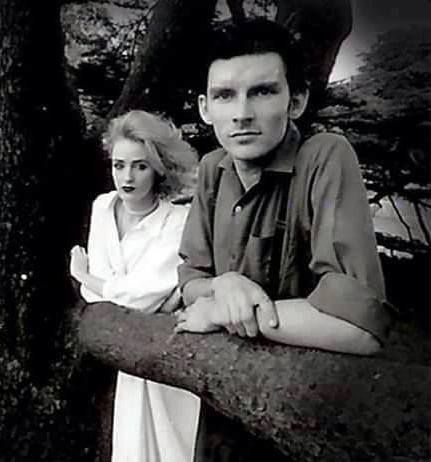How to spin like a dancer
Super spinning tips and how to turn better in dance -
Lots of teachers (and other advanced dancers) get annoyed by non-teachers trying to teach people how to dance. I’m not going to do this, because if you want to dance well and improve it’s about getting good basic dance lessons, and practice.
But so many people struggle to spin and haven’t ever been taught. Here are the tips I was given via different teachers through the years. Tips from 13 years of ballet classes and 2.5 years of salsa where we were taught turning and spinning drills from a Guinness world record holder for spinning.
Hopefully some of these spinning tips will help you in both turning and spinning better as you dance.
1. Know the difference between a spin and a turn
A turn is stepping as you rotate, in modern jive that’s usually via a ‘return’ or travelling return. A spin should be on one foot and can be a free spin or aided by the leader.
2. Learn to spot
If you get dizzy when spinning, learning to spot is essential. It’s all about practice so that you’ll do it automatically. Essentially you’re leaving your eyes looking at one spot in front of you as your body turns, then when you can’t leave your head behind anymore, you whip your head around so your eyes are looking back at your spot again as the rest of your body follows. You can start slowly and build it up. This video is a simple beginner technique for starting out.
There’re plenty of YouTube tutorials and guidance on how to spot while spinning, and it does help reduce dizziness especially during multiple splns. I find spinning is easier than continuous turning in one direction because spotting is easier when you’re preparing to spin in one place.
3. Spin and turn on one foot
To spin you need as small an area as possible on the floor. Using two feet will act as a brake and make you unable to turn.
4. Turn on the ball of your foot
I’m naughty at this because I do get lazy and tend to relax into my heel when I turn, but you should be turning on the ball of your foot. Your heel needs to only be slightly off the floor. But having your weight over the front of your foot will keep your body in the right place for turning without wobbling off in a different direction.
5. Don’t lift your spare foot up
When spinning, sometimes you see people lift their spare foot in the air (usually, bending at the knee, I presume it’s a natural reflex or they want to keep the spare foot out of the way). This will make you wobble and can also catch your partner or anyone else dancing closely. When doing a basic spin, you want to keep your spare foot next to your anchored foot, just above the floor. This keeps your body centred over your legs and should help keep you upright.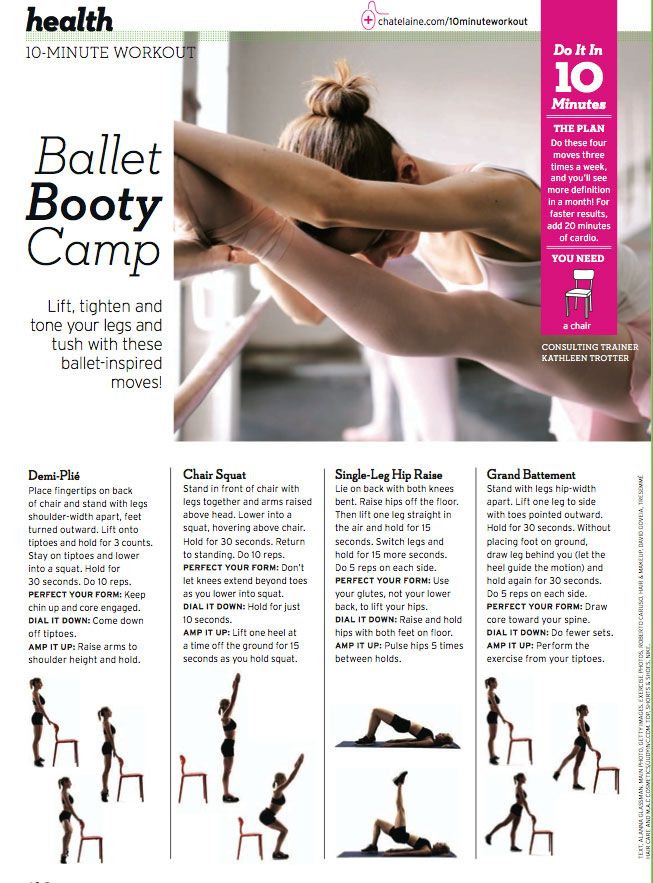 It’s much hard spinning with one leg raised.
It’s much hard spinning with one leg raised.
6. Think down into the ground, not up in the air
Lots of dancers lift up when trying to spin. This could be because they’ve done ballet in the past which is about pirouetting on your toes in a releve position. But it’s more likely that we often turn under the leader’s and our raised hand, so the body tends to follow upwards as well.
Yes, you need to straighten out your body and think open rather than tight and leaning over, but if you keep your knees slightly bent and think about drilling into the floor, you’ll be more balanced and grounded. It will certainly suit a more grounded dance than one like ballet which is much lighter and in the air. You’ll also move less when you’re spinning.
It’s hard to explain. But if you’ve done any latin dancing or salsa, where you need to feel the floor through your feet to get the right hip action, the grounding and turning into the floor rather than upwards, is the same sensation.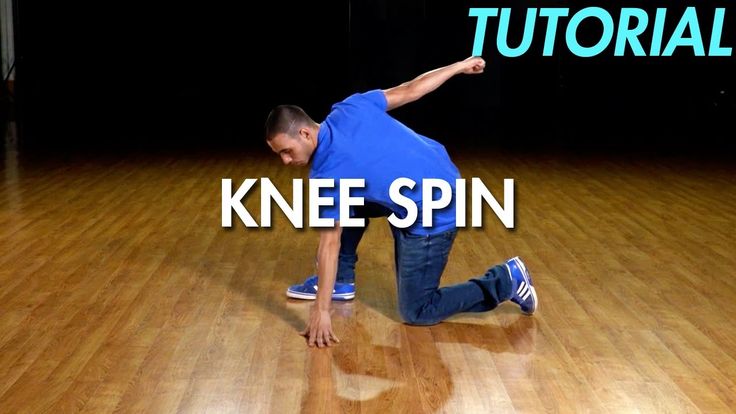
7. Have good posture
To spin well, you need to engage your core. You need to stay relaxed and not tense up your shoulders, pull your tummy in and tuck your bottom under.
Then keep your arms in a suitable position. The easiest position for a free spin is to bring your arms towards each other in front of you, at chest level, in an oval shape. Bringing one arm to join the first helps with impetous in a spin, but also keeps posture and position right. Oh and flailing arms isn’t a good look.
This clip shows a comfortable arm position and the posture needed (salsa – they do a lot more spin technique than modern jive! but you can still get tips on arm, body and foot position)
8.
 Don’t look down
Don’t look downIf you look down your weight balance will move and you’ll be more likely to fall. Look straight ahead for a steadier turn (or spot if you use that technique).
9. Don’t rush
So many people panic when they have to spin and try and go whooshing off really fast. But if you’re spinning or turning to music, you want to fill the beats you’re spinning on. If it’s a slow track, you’ll have longer to do one rotation. There’s no point whizzing round to find there’s still half the beat left to go.
10. Practice
It’s all about practice. Start with a single spin, and work up to multiple spins if you want. If you can do free spins yourself, it’s easier to then be led into aided multiple spins or turns. This clip shows the use of a clock method (admittedly for salsa spins with the prep, but the idea is the same for modern jive).
Tips for leaders
Most spinning is done by the follower, but these all apply to leaders as well. Plus if you’re prepping your partner for a spin, there’s things to be aware of.
Plus if you’re prepping your partner for a spin, there’s things to be aware of.
Don’t ever force the follower into a spin. You can prep for one (either raising the arm or prepping the follow for a free spin), but only they can do the spin.
Ensure your prep is accurate. If it’s a free spin, don’t prep the spin too far out from the follower’s centre, otherwise they will be off balance and the spin won’t work. If it’s an aided spin, raising your hand and the follower’s, to just above and in front of the follower’s head. Not really high above their head otherwise they’ll struggle to keep connection. And not below the top of their head otherwise they’ll have to duck which is a totally different move.
Own your spin
[bctt tweet=”The person spinning should always be the one in control of the spin ” username=”whatabout_dance”]
A final point to remember is that you don’t have to do multiple spins. Yes sometimes it’s nice to throw some in if the situation is right and the music calls for it.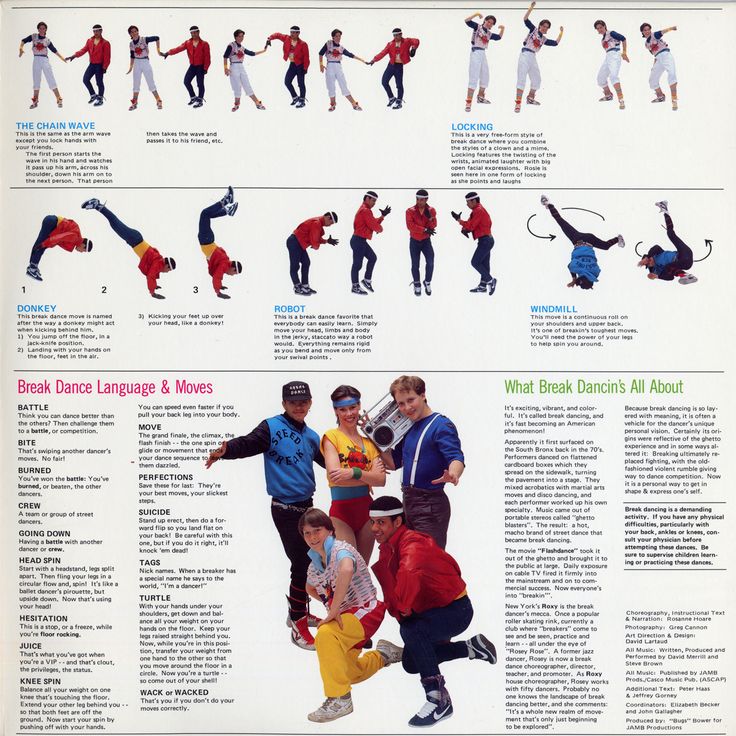 For example, I can do a double or triple (when I’ve been practising for a while), but I rarely do more than a single in freestyle. Because I’d rather have an immaculate single spin than try a multiple spin when the lead or prep doesn’t feel right, or the floor isn’t smooth enough. I’ve never had a leader moan that I’ve refused to do a double when he’s led that. I’ve usually had people compliment me on my spins.
For example, I can do a double or triple (when I’ve been practising for a while), but I rarely do more than a single in freestyle. Because I’d rather have an immaculate single spin than try a multiple spin when the lead or prep doesn’t feel right, or the floor isn’t smooth enough. I’ve never had a leader moan that I’ve refused to do a double when he’s led that. I’ve usually had people compliment me on my spins.
How do you get on with spinning? How were you taught?
Like this:
Like Loading...
How to Spin Properly
Spinning takes training, time, education, mental determination, and LOTS of practice.
When you spin you must have the following:
1) Have and Maintain a Positive Mental Attitude
2) Whip upper body, starting with your shoulders around as fast as possible.
3) Bend your knees slightly to ground yourself.
4) Stay on both balls of your feet.
5) Make sure your back is straight. Maintain a good posture.
6) Use both feet as you spin
7) Your Free arm needs to be in front of your chest, palm facing down.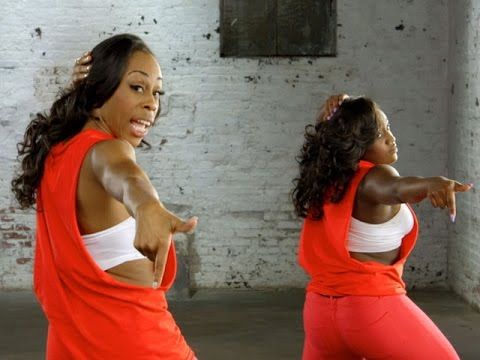
8) Make sure you apply the L technique, Keeping the arm that the guy is holding firm and steady in an L-shape in front of your face.
9) Hold your own weight and balance and do not depend on the guy to hold you up.
Let’s talk about all this.
1) Maintain a Positive Mental Attitude
First and foremost, you’re never going to be able to spin, and spin well, if you think you can’t, or if you think it’s too hard. I’ve trained countless women who honestly thought they could never do spins by using these simple techniques. From the skinniest, to the most overweight, both men and women of any size can spin. It’s just a matter of proper training, and the right attitude. You must convince yourself in your mind FIRST that it actually is possible to spin, and spin very well. Remember, the object is to get yourself around, and complete the move. Keep the goal in mind, (which to some, is to actually be standing afterward!), and you’ll be able to do it. The gray-matter between your ears will get you around. Read on, and I will teach you the tricks and tips on how to spin fast and very controlled..
Read on, and I will teach you the tricks and tips on how to spin fast and very controlled..
2) Whipping your shoulders around as fast as possible
It’s not your feet that spin you, it’s not your head, it’s not your arms, and it’s not your legs. It’s your SHOULDERS that gain the momentum. I learned this from my very good friend and instructor, Mr. Joe Cassini. When you turn your shoulders, the rest of your body follows, and stays more balanced during the spin.
3) Bending your knees
People, if you spin with straight legs, you’re going to tilt, tumble, and then crash like a great tree in a forest. When spinning on your own, or if a guy is spinning you, it is important to have a springy “bend-in-the knees, shock-absorbing”, type of posture like you’re about ready to squat in the bathroom (sorry to be so graphic, but I’m now sure you can picture EXACTLY what I’m trying to convey). This will lower your body weight to the floor, so you can be more “grounded” and stable during the spin.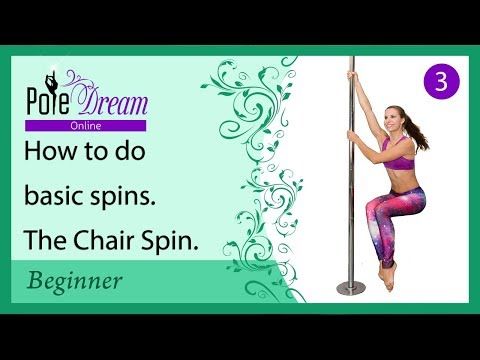 This must be done with correct posture, and a very straight back. Do not bend over! Maintaining this type of “pose” per se, is essential for balance and sold controlled spins.
This must be done with correct posture, and a very straight back. Do not bend over! Maintaining this type of “pose” per se, is essential for balance and sold controlled spins.
4) Staying on both balls of your feet
Simple. If you’re doing multiple spins, you want your legs and feet TOGETHER. Do not cross your legs, or try to step over your feet — especially during a fast multiple spin. Crossing your feet will only tangle up your legs, and you’ll end up looking like a cow being roped in a rodeo. We all know where they end up! ON THE GROUND!
5) Maintaining a straight back (good posture)
having great posture not only looks good, but also is very essential in keeping balance and control during multiple spins. I wrote an entire article about posture several years ago. it’s still solid information, and has proven itself over and over again to be the fascinating, plain and simple truth. I still hand it out during my Ladies Styling Classes, so Read it!
6) Dragging your feet
The more you drag your feet, the more balance you’ll feel. If you’re closer to the ground, you won’t fall over. I train my ladies to drag their feet, even during basic and cross-body leads. I teach them to feel the balls of their feet dragging. Try it.
If you’re closer to the ground, you won’t fall over. I train my ladies to drag their feet, even during basic and cross-body leads. I teach them to feel the balls of their feet dragging. Try it.
I learned this technique while at the Mayan in Los Angeles one night. The floor was so crowded with people, it was almost impossible to dance without crashing into someone. I kept stepping on dancers around me. I kept saying, “I’m sorry…, Oops! I’m sorry, oh gees, I’m really sorry..” over and over, to everyone around me, because I kept stepping on them! I finally got so frustrated, that I decided to not pick up my feet AT ALL the rest of the evening. I didn’t want everyone to hate me, so I just “stayed low”, and drug my feet the rest of the night.
Amazingly, the minute I started dragging the balls of my feet, my balance improved, and I could dance better! My partner complimented how I didn’t feel so heavy anymore, and said he felt like I was “holding my own weight” instead of hanging on him! I was in shock. I had actually found the secret to maintaining balance and excellent control on the dance floor.
I had actually found the secret to maintaining balance and excellent control on the dance floor.
I’ve been dragging my feet ever since, and my dancing has improved TREMENDOUSLY!
7) Free arm in front of your stomach, palm facing down
I learned this technique from my friend, and instructor, Josie Neglia. If you maintain your arm position in front of you, by your stomach, with your palm facing down, it will be as though your arm is on a table, maintaining more balance. DO NOT put your hand behind your back or on your hip during multiple spins. This looks AWFUL!!!
8) Keeping the arm the guy is holding firm like a rock and in an L-shape in front of your face
I learned this in New York a few years ago. Ladies, during multiple spins, and even during single, or double spins, if you keep your arm in front of your nose, and strong and sturdy like a rock, you’ll not only spin faster, but will not risk screwing up your shoulder or collar bone from poorly-executed spins from men (sorry guys, but some of you need to get some training not only on how to properly spin a woman, but how to stop her after her spins.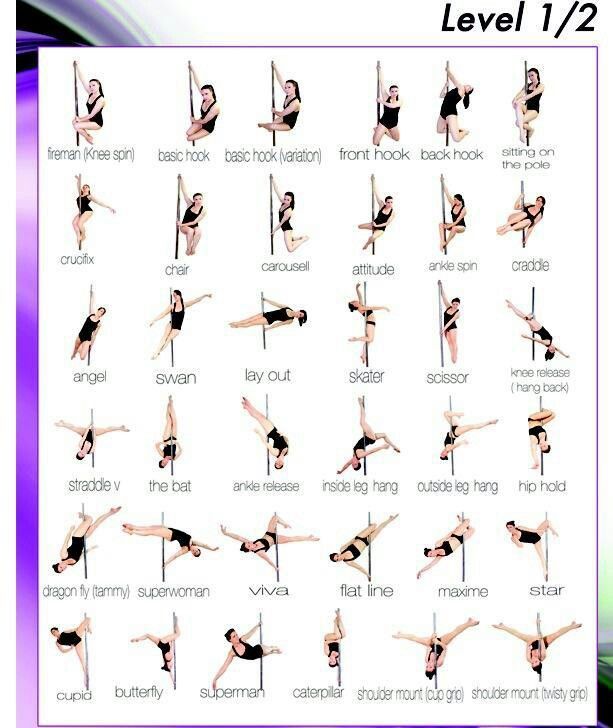 Look up your local instructors in our City guides section, or order my Cool Moves© video series to get some ideas of how to spin, and stop a woman properly.
Look up your local instructors in our City guides section, or order my Cool Moves© video series to get some ideas of how to spin, and stop a woman properly.
9) Don’t depend on the guy to hold you up
If he accidentally lets go of me during a multiple spin (due to sweaty palms, improper hold, or finger cramping), I’ll keep spinning as if he was there, and simply wait for him to pick me up again with his other hand if he wants. (I won’t stop spinning on purpose, just to stun him.. Gees, I’m such a ham!!)
Ladies, NEVER pull down on the guy’s hand or thumb to hold you up during a single or multiple spin. If you do this, he’ll never want to try it again! Don’t hang on to his hand for dear life. If he spins you, do everything I told you above — that includes holding your own weight. You can never, ever depend on a man to keep you in balance, control you, or hold you up out there. You must be able to do it on your own. This will put less pressure on the both of you.
Overall, remember that both of you are supposed to be having FUN dancing together.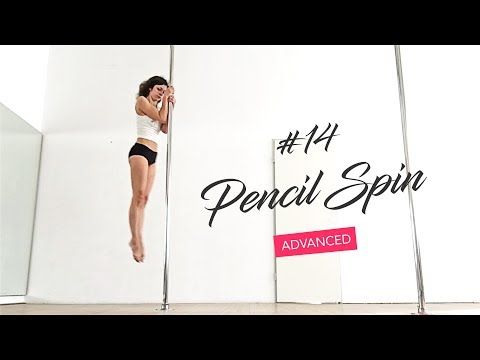 If you put stress on your partner in any way, dancing with you will not be an enjoyable experience. I’ve seen men pass up absolutely gorgeous women for the more homely-type, simply because they’re better, more stable dancers.
If you put stress on your partner in any way, dancing with you will not be an enjoyable experience. I’ve seen men pass up absolutely gorgeous women for the more homely-type, simply because they’re better, more stable dancers.
“Yea, she’s a knock-out, but can’t turn if you paid her. I’m sorry, but I’d rather dance with someone who CAN DANCE.”…men tell me. What does this mean? There’s actually HOPE for those of us with the not-so-knock-out figures and looks! I’ve seen it happen over and over again. Homely-looking women who try harder than anyone else to keep balanced and dance well. They work hard at their craft, and eventually end up dancing all night long! Meantime, their more beautiful sisters wait out along the sidelines, and end up dancing with the more amateur beer-drinking types. It’s a pity they don’t read Salsa web.
Face it, if you can’t dance well, you won’t get asked to dance much. That’s a fact.
Listen, YOU CAN BE OBESE, but if you know how to dance, you’ll be out on the dance floor ALL NIGHT LONG.
I’ve seen it happen, first-hand.
Ladies, it is your responsibility, no matter what level he is, to make your partner feel very comfortable spinning and dancing with you. It is your responsibility to make the both of you look fabulous out there. By applying the techniques I’ve stated above, you’ll be on your way to becoming a fabulous spinner.
By applying the techniques I’ve stated above,
you’ll be well on your way to becoming a FABULOUS spinner
Article By Edie, The Salsa Freak
Are you ready to start dancing? check out STEP N DANCE for Salsa & Bachata Dance Classes
Physics in ballet - Informio
Dancers - athletes of God
Albert Einstein
Ballet is the art of plasticity, inspired, filled with feelings, expressed movements, life, embodied in choreographic vocabulary; this is one of the most famous theatrical performances, the basis of which is dance. Not everyone thinks about how much effort a dancer puts in to master his body, learn the subtleties of ballet mastery, and achieve ease of performance.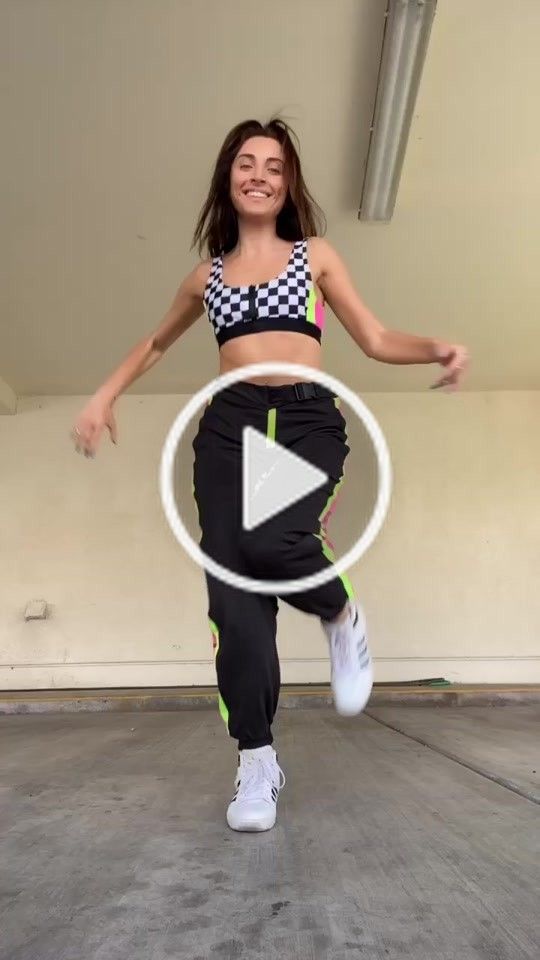
The weightless, floating, striving movements of the dancers seem to be arguing with the laws of physics itself. As much as we would not like to believe in the magical mystery of choreographic art, it is worth noting that it is this natural science that creates the entire dance, embodies the ideas of the directors and helps us understand body language.
If classical dance could be expressed by a formula, it would look like this:
Physics + prepared body of the performer + emotions and acting = BALLET
A hypothesis arises: knowledge of the laws of physics and their application in the work of dancers will help them perform elements and reduce the likelihood of injury to artists.
In order to confirm your hypothesis, you need to analyze the following points:
- Equilibrium. Balance is an important part of the barre and exercise. Quite often, it is difficult for beginner dancers to maintain balance, even with support. For example: rond de jamb en l'air (rond de jamb en leer), battement fondu Fig.
 1 (batman fondue), Arabesgue (arabesque).
1 (batman fondue), Arabesgue (arabesque).
Standing confidently, and often even on one foot, will help to follow a simple rule: the vertical projection of the center of gravity must be inside the support area. A clear example of this law is the Leaning Tower of Pisa, it does not fall, because the pattern is observed (a slight violation is permissible, since it is dug into the ground). If the center of gravity of the performer shifts, then the person has to step over and take a new position. The dependence also works: the higher the center of gravity, the more difficult it is to maintain a stable position. So, for example, in tumbler-type toys, it is located very low, so they are stable.
- Rotations. The rotation technique is also not unimportant in classical dance, oddly enough, they directly depend on balance, but in these cases slightly different laws apply. Examples of rotations: pirouette (pirouette), fouetté (fouette), etc.
We will be able to understand how a ballerina performs rotational movements with great speed if we analyze the position of her body.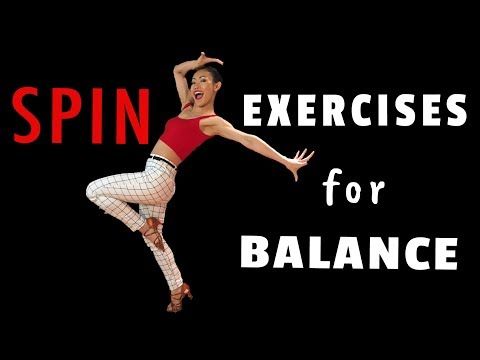 The performer stretches out, like a string, and puts her leg or arm perpendicular to the movement being performed. It seems as if she is repelled each time from an invisible wall. In fact, the dancer's main assistant is the law of conservation of angular momentum - in order to increase the speed of rotation, you need to reduce the mass or bring it closer to the axis of rotation. This is done by pressing the arms or legs to the body.
The performer stretches out, like a string, and puts her leg or arm perpendicular to the movement being performed. It seems as if she is repelled each time from an invisible wall. In fact, the dancer's main assistant is the law of conservation of angular momentum - in order to increase the speed of rotation, you need to reduce the mass or bring it closer to the axis of rotation. This is done by pressing the arms or legs to the body.
- Pirouette (pirouette)
Starting the pirouette, the dancer puts her supporting foot on her toe, pushes off the floor with her working foot, giving herself a rotational impulse. In a fraction of a second, she takes the necessary position, which corresponds to the moment of inertia, so the initial speed of rotation of the performer is quite low. The ballerina presses her hands and lowers her leg. The moment of inertia is reduced by 7 times, the angular velocity increases by the same amount - due to which the ballerina makes several quick turns on the toe, and in order to stop spinning, she again raises her leg and arms, the speed decreases, and the dancer stops.
- Fouetté
When performing fouetté, there are two principles - manifestations of the law of conservation of angular momentum. It is known that the angular momentum is a vector directed perpendicularly (in our case, vertically upwards) and proportional to the speed of angular rotation.
There is a trick that is used when making a fouette: the dancer raises her hands to the 3rd position, thanks to which she starts to spin faster. This is also carried out because of the same law.
So, we can conclude: all shocking rotations are the correct application of the law of conservation of angular momentum and rotational momentum.
- Jumping. Jumping is the most time-consuming part of a classical dance lesson. Preparing for jumps takes a huge amount of time in order to strengthen the muscles and build leg strength.
The acceleration of the dancers during the jump is comparable to the results of the best athletes (high jumpers). The dancer's body during the jump develops a speed of up to 4.5 m/s in about 0.25 s. Divide 4.5 m by 0.25 s, and we get an acceleration equal to 18 m/s (2g). For example: an elevator, starting to move, has an overload from 1.3 to 1.6 g.
The dancer's body during the jump develops a speed of up to 4.5 m/s in about 0.25 s. Divide 4.5 m by 0.25 s, and we get an acceleration equal to 18 m/s (2g). For example: an elevator, starting to move, has an overload from 1.3 to 1.6 g.
Find the power of the ballet dancer's jump. Let's assume that the mass of the dancer is 65 kg, which means that the work is equal to 650 joules (0.16 kilocalories). Therefore, the power of a jump lasting 0.2 seconds is 650 J/0.2 s. we get 3250 watts (3.3 kW), which is approximately = 5 horsepower. In order to shoot up, the performer needs to make as much effort as possible in order to change the horizontal component of the gained speed into a vertical one. The horizontal speed of the dancer is approximately 8 m/s, and the vertical speed is 4.6 m/s.
- Grand jet
How do dancers achieve the "flying illusion"?
Performing grand jet, the dancer seems to be flying over the stage, but in fact her center of gravity describes a parabola, like any object during the fall is guided solely by the gravitational force. But the human body changes configuration during flight. When jumping, the ballerina expands her legs and arms. Such a maneuver makes the landing (fall) almost imperceptible and creates a feeling of weightlessness of the performer.
But the human body changes configuration during flight. When jumping, the ballerina expands her legs and arms. Such a maneuver makes the landing (fall) almost imperceptible and creates a feeling of weightlessness of the performer.
- Pas de Chat
Another jump that creates a similar illusion is Pas de Chat (cat's step). The dancer makes a plié, and while increasing her step, she sharply raises her knees in turn, it turns out that at the moment of the highest position, the legs are in the air at the same time. The dancer seems to freeze in the air for a split second. Landing, she lowers her legs also in turn, which makes the fall soft and smooth.
The ability of a ballerina to hold a position in the air is called a balloon.
Landing is an important part of the jump, as the laws of physics dictate that momentum must be dissipated. A heavy landing would destroy the whole illusion of lightness, and, perhaps, injure the dancer. The secret to solving the problem is a floor designed to absorb impact. Also, the ballerina bends her knees (plié) and stretches her leg from toes to heel. This is necessary not only for the artistic intent, but also for the safety of the performer. This technique should be taught by competent teachers.
Also, the ballerina bends her knees (plié) and stretches her leg from toes to heel. This is necessary not only for the artistic intent, but also for the safety of the performer. This technique should be taught by competent teachers.
To cope with her part, the ballerina seems to defy the earth's gravity, working to the maximum. The fundamentals of physics and the science of human perception provide an understanding of how this is achieved.
- Support. Support is one of the most beautiful elements of ballet numbers. (Appendix Fig. 3-5)
In a circus, for example, one performer can hold the whole group, balancing a little, so that the center of gravity of the whole “construction” passes inside the support area. A ballet dancer hardly has to keep more than one partner. Therefore, he easily maintains stability when performing various supports, making sure that the general center of gravity of the performers is always exactly above his feet.
- Pointe dance.
 Pointe dance is one of the enchanting art forms, it seems as if the performer is levitating, smoothly crossing the stage space. (Appendix, Fig. 8) The elements made by the ballerina are light and intangible. Working on tiptoes is a titanic work that is not visible to the viewer. The muscles of an ordinary person are soft, while those of a ballerina are more like iron rods, strong and hardy. After all, in a different scenario, the dancer would not be able to keep her weight on the heel of her toe shoes (Appendix, Fig. 6) with an area of 2 cm2.
Pointe dance is one of the enchanting art forms, it seems as if the performer is levitating, smoothly crossing the stage space. (Appendix, Fig. 8) The elements made by the ballerina are light and intangible. Working on tiptoes is a titanic work that is not visible to the viewer. The muscles of an ordinary person are soft, while those of a ballerina are more like iron rods, strong and hardy. After all, in a different scenario, the dancer would not be able to keep her weight on the heel of her toe shoes (Appendix, Fig. 6) with an area of 2 cm2.
As they say, "the dancer's feet are fed", but this is actually not a joke. If a dancer injures his legs, which happens very often in the field of choreography, but he cannot recover for a long time and goes out of shape.
The ballerina's feet are doomed to injury and torture. (Appendix, Fig. 7) This is the other side of the coin, which the viewer does not see. The most common professional injuries of ballerinas are sprains, dislocations, fractures and injuries of the ligamentous apparatus of the joints.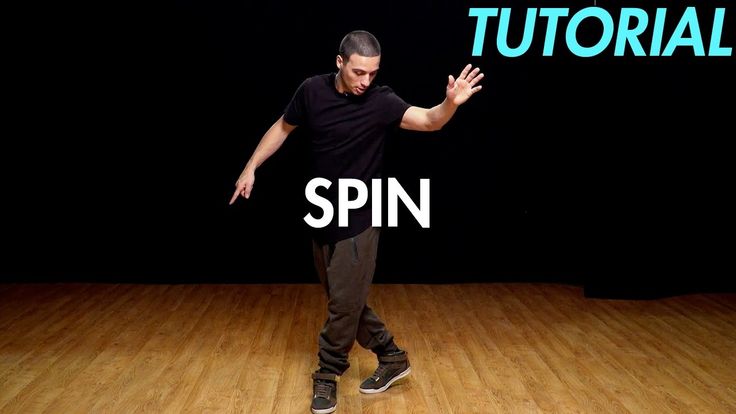 All this will lead to inflammation of the pelvic organs.
All this will lead to inflammation of the pelvic organs.
Suppose the ballerina's mass is 50 kg, let's calculate the pressure with which she presses on an area of 2 cm2.
Given: SI Solution:
S=2cm2 2*10-4m2 P=F/S
m=50 kg F=m*g
F=m*g
Р=m*g/S
P=10 m/s2*50 kg/2*10-4m2=2500000 Pa=2.5M Pa – pressure produced by one foot.
For comparison, this is 100 times the pressure exerted by a tracked tractor on the ground.
Such enormous strength hides under the guise of a fragile, almost transparent ballerina.
Comparison of the laws of physics and elements of classical dance
|
An element of classical dance. |
The law of physics. |
| Arabesgue (arabesque) - a position when the dancer balances on one leg | Stable balance, center of gravity |
| Pirouette | Law of conservation of angular momentum of a body |
| Fouette | Law of conservation of angular momentum of a body |
| Grand jet | Gravitational force, center of gravity |
| Support, ballerina upper support on one arm | Stable balance, center of gravity |
| Pointe Dance | Solid body pressure, stable equilibrium |
Everything that happens on the stage of the theater is a gigantic, collective, hours-long work.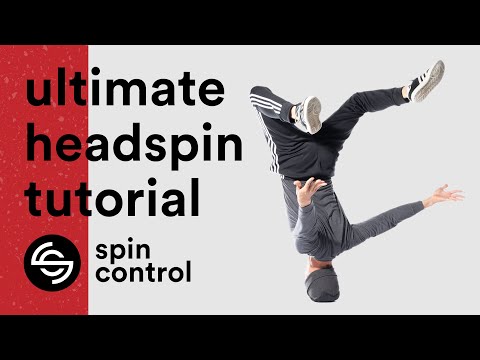 Sitting in the auditorium, it is impossible to imagine that every dancer devotes his whole life to the art of ballet, exhausting training. It is worth remembering that dance is not only physical exercise, but also acting.
Sitting in the auditorium, it is impossible to imagine that every dancer devotes his whole life to the art of ballet, exhausting training. It is worth remembering that dance is not only physical exercise, but also acting.
Based on all of the above, we can conclude that an artist is not only a physically prepared person, but also, to some extent, a physicist. After all, each number must be perfectly worked out, and without knowledge of physics it is quite difficult. Accordingly, the preparation is carried out with the help of this exact science.
As a result of the study, it was proved that the ability to use the laws of physics is directly related to the career and dancing abilities of a ballerina.
References:
- Myakishev, G.Ya. "Physics. Textbook grade 10 "[Text] / G.Ya. Myakishev, B.B. Bukhovtsev. - M.: Enlightenment, 2010 - 356 p.
- Krasovskaya, V.K. "History of Russian ballet" [Text] / V.K. Krasovskaya. - M .: Education, 2012 - 215 p.

- Rymkevich, A.P. "Physics. Task book for grades 10-11 "[Text] / M .: Education, 2012 - 192 p.
Original work:
Physics in ballet
Appendix to work
"I like that I stand out." Men dancing in heels on Russian TV
- Anastasia Anisimova
- for BBC
Photo credit, Instagram Igor Kotov
The appearance of men in heels in a dance show on Russian television surprised not only the audience, but also the professional judges. At the same time, in the West, fashion in traditionally female dance directions today is largely set by men in heels.
Anton Lushichev came to the audition for the TV project "Dancing on TNT" in high heels. Upon entering the stage, he immediately aroused surprise not only among the audience, but also among the judges, most of whom are professional choreographers:
- Streep?
- Yes
- Come on?!
The dance direction called strip or strip plastic, so often chosen for listening by those who want to take part in the TNT project, has become something familiar in four seasons.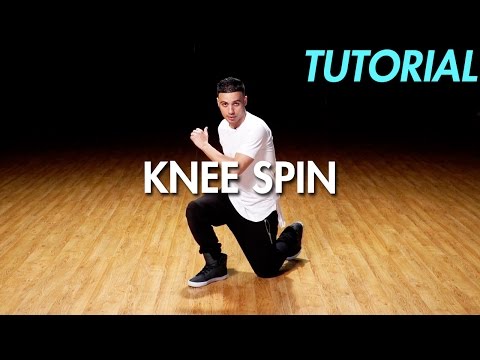 But not in the case when this style is performed by a man.
But not in the case when this style is performed by a man.
"I like that I stand out"
At the audition, Anton had to not only dance, but also answer questions that were never asked to the female contestants who came to the show with the same style:
- Why did you choose this style? Why do you like him?
- I like that the strip can be different. I like that I'm in heels. I like that I stand out.
After the dance, the judges began to discuss not so much the performance of the dancer as the appropriateness of the man choosing this direction. At the same time, all the judges noted that Anton danced perfectly.
"You came in high heels and danced very well. It's cool. But I want to see a man even dancing. It's uncomfortable for me to look at such a performance in a man's guise," said TV presenter Olga Buzova, who sat on the jury.
- Dancing without music? The story of the deaf dancer Andrey Dragunov
- "I can't afford to do bad things": the story of a girl who became a ballerina at 30 high heels in Russia is difficult: "When I just started dancing, when I just bought myself heels and went to my first St.
 Petersburg championship, half of the people in the hall simply did not understand what was happening. And the reaction was very negative. Now they began to treat me softer, but initially it was trash. You walk down the hallway and everyone is looking at you with huge eyes."
Petersburg championship, half of the people in the hall simply did not understand what was happening. And the reaction was very negative. Now they began to treat me softer, but initially it was trash. You walk down the hallway and everyone is looking at you with huge eyes." Universal dancer
Anton is not the only man who came to audition for the dance project in heels.
Igor Kotov's performance also surprised the judges, while all the jury members admitted that he also danced the strip choreography perfectly, performing complex tricks and acrobatic elements.
Skip the Podcast and continue reading.
Podcast
What was that?
We quickly, simply and clearly explain what happened, why it's important and what's next.
episodes
The end of the story Podcast
If for Anton dancing in high heels is a provocation, an opportunity to stand out and make himself known, for Igor it is a skill that will make him a versatile dancer.
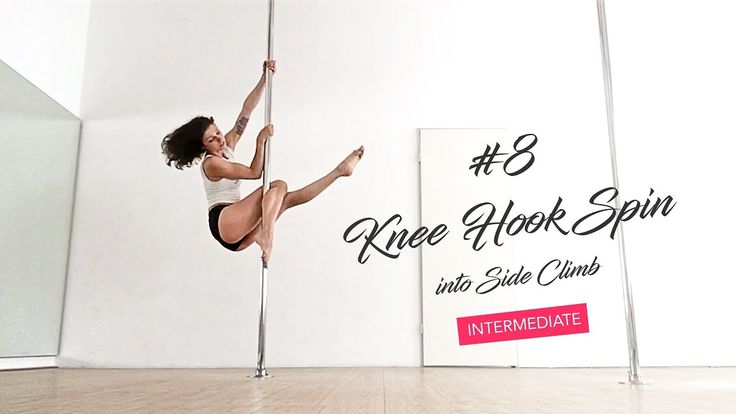
"I started dancing classically as a child, then I switched to modern choreography, hip-hop, jazz-funk. I am a versatile dancer, I also dance the strip. Initially, the strip was created for girls. And there is an absolutely erroneous opinion that this is about how to spin on poles and undress, although this is not at all the same. It is the same style of dance as hip-hop. Only it has its own characteristics. A real dancer must dance both female choreography and male choreography. There is nothing wrong with me in I don’t see it,” Igor said in a TV show.
Igor, like Anton, admits that in Russia dancers in high heels have to face discrimination: “We have very few boys who dance the strip. Not everyone dares to do it. style".
Strip for everyone
In Russia, strip plastic performed by men causes mixed feelings even among those choreographers who are engaged in this direction.
Anastasia Yurasova, the founder of the Frame Up Strip style, told the BBC Russian Service: "How do I feel about guys dancing the strip in heels? Personally, I don't really like it.
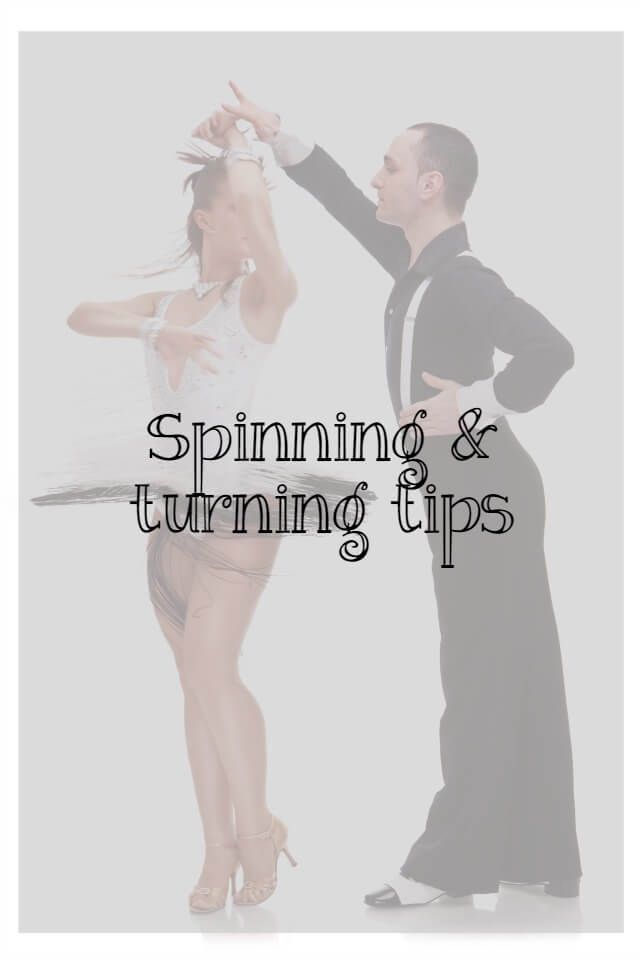 And I think that every man should be a man. I am not in favor of this."
And I think that every man should be a man. I am not in favor of this." At the same time, she noted that there are dancers who deserve to dance in heels: "If we are talking about dancers like Igor and Anton, then for me they do not look like a woman. Despite the fact that they wear heels, they have masculine energy and what they do does not look vulgar. They have a chic performance technique, "says Anastasia Yurasova.
In her opinion, the audience in Russia is not ready to accept a male dancer in heels.
Social media reacted differently to men wearing high heels. Among the many negative reviews, there were those who supported the dancers and wrote: "Strip for everyone." Moreover, many users wondered why a woman who dances male style well in Russia will always receive public approval, when a man with a style that is traditionally considered feminine will most often be ridiculed.
Image copyright Twitter
Better than a woman performing?
A man dancing in heels is hardly surprising among choreographers in the US and Europe.
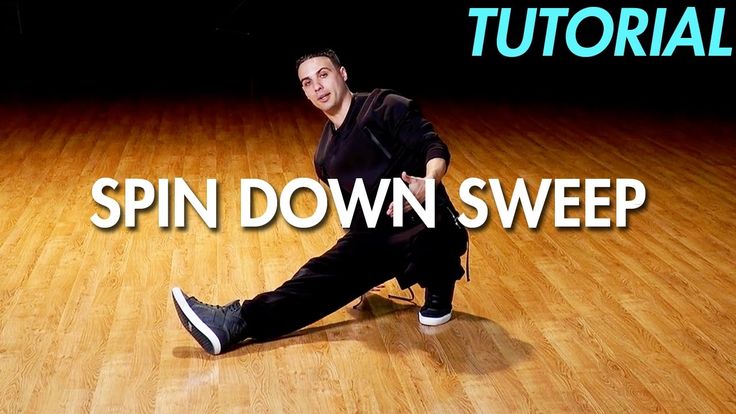
"Today this is really one of the trends in dance culture. We see more and more men among students and teachers of dance styles that used to be considered female," says Tamara Kramer, director of the Studio 68 dance school in London.
Male dancers in the West not only dance in high heels, they create it.
One of the most famous dancers in this direction is the American Zhonte.
"When he first appeared, it was a real explosion in dancing. Everyone asked - God, who is it, how does he do it, everyone wanted to copy him and still want to," says Kramer.
According to her, Zhonte's solo performances in high heels are an inspiration for dancers and dancers all over the world.
After graduating from ballet school in Oregon and working as a dancer for Janet Jackson, Zhonte began to collaborate with the stars as a choreographer. He directed Beyoncé's The Beyonce Experience tour and many of Beyoncé's music videos, including her hit Freakum Dress video.

Another famous dancer in high heels is the Frenchman Janis Marshal.
In 2014, he was a finalist in the television contest Britain's Got Talent. "Janis became a prominent figure in dance back in 2010, but his participation in this TV project opened up heeled dancers to a wide audience in the UK and changed the perception of them in many ways - they began to be taken seriously, dancers in heels," - says British choreographer Richard Marcel.
"It was ten times better than any woman who came on this stage today. Fantastic!" - the judges told him after his first performance at the competition.
In 2015 Janis choreographed for Cirque du Soleil in Las Vegas. According to viewers, it was perhaps the sexiest performance on the show in its history.
"To say that a man cannot dance in heels is to discriminate against dancers. If you like to dance in heels, why should you stop yourself?" says Tamara Kramer.
According to her, dancing in high heels performed by men and women differs in many ways: “These are different approaches even in teaching.


